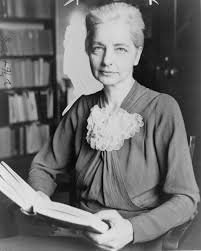News & Events
“GUNNISON — In the early 1990s, when Mark Stiger first unpacked what’s known as the Peterson collection, the anthropology professor found more than 100 objects wrapped in decades-old newspaper and stuffed in cardboard whiskey and grocery boxes, stacked and nearly forgotten in a stairwell on the Western Colorado University campus.
When he peeled away the paper and saw a human skull, and ultimately the remains of 25 individuals among about 100 other cultural objects, the discovery triggered an almost visceral reaction.
“It was embarrassing,” Stiger recalls, noting how much attitudes had changed after federal law created the first template for repatriation of culturally identifiable remains and disposition of those whose origins remained a mystery.
The objects had been amassed by a man who lived in the southwestern corner of Colorado in the 1920s and ’30s. When he died in the 1940s, he left the collection to his brother, an alumnus of what then was known as Western State College of Colorado.
In 1946, the brother offered the collection to his alma mater. Under the direction of C.T. Hurst, one of the founders of the Colorado Archeological Society, the school had opened a museum in the 1930s that displayed regional artifacts before Hurst’s death in 1949.”
This article continues on the Colorado Sun page linked above.
“GUNNISON, Colo. (KREX) — For more than 100 years, Western Colorado University has been serving students primarily in liberal arts and sciences.
But a massive historical collection of ancient artifacts sat hidden, tucked away in the back of the university’s closets and crawlspaces for decades…until about 1989, when Professor Mark Stiger came upon this forgotten lot.
Professor and Curator David Hyde tells Western Slope Now the university museum holds more than 250,000 artifacts. Most of the finds come from C.T. Hurst, a past teacher and archaeologist in the ’20s, ’30s, and ’40s.
However, not all of the artifacts came from Hurst – locals donated some of them in the early days, and not all were pleasant finds.”
This article continues on the Western Slope Now page linked above.
“GUNNISON, Colo. — Western Colorado University is returning the remains of 25 individuals to Native American tribes, a century after they were taken from their original resting place.
It's yet another chapter in the state of Colorado's slow reconciliation with its fraught history of atrocities committed against Native Americans.
It's not the only effort, either. Just weeks ago, a state-commissioned report by History Colorado revealed that the number of deaths of Native children at Indian Boarding Schools in the 19th and 20th centuries were underreported by nearly 300%.
Western Colorado University will return the remains to four tribes— the Southern Ute Tribe, Navajo Nation, Hopi Tribe and the Pueblo of Zia— with the help of funding from the National Park Service.
The university was awarded an $81,000 grant under the Native American Graves Protection and Repatriation Act (NAGPRA). That money will facilitate the return of both the remains and over 100 cultural objects, which were part of the Peterson collection in Western's CT Hurst Museum.”
This article continues on the 9news page linked above.
"This podcast aims to explain the ethics within the field of Anthropology”
Podcast is Linked above
“The remains of Native American ancestors showed up in boxes on the doorsteps of Colorado museums and at yard sales in Denver neighborhoods.
They sat for decades in metal sheds in the state’s national parks and in the bowels of prominent universities.
These human remains were excavated — looted — from the earth that protected them for centuries, in some cases so scientists could study their skulls to prove bogus, racist theories about the Indigenous peoples that lived here for millennia before Europeans displaced them from their ancestral homeland.
Thirty-three years ago, the U.S. Congress attempted to right some of the wrongs of the country’s genocide of American Indians by passing a law designed to give back to tribes these remains, these ancestors, who filled galleries at America’s top universities and museums.”
This article continues on the Denver Post page linked above.
Featuring Dr. Mark Stiger this episode of Rocky Mountain PBS’ Colorado Experience focuses on evidence of prehistoric mammals and early humans that have been discovered across Colorado. Lamb Spring in Douglas County is home to the largest collection of Colombian mammoth bones in the state, offering archaeological insight into these prehistoric dwellers. The discoveries of Lindenmeier near Ft. Collins and Mountaineer in Gunnison reveal much about the people who lived here over 10,000 years ago.
This documentary aired in November of 2017 but still others a distinct and helpful look at some of the earliest dwellers in the Colorado area.
Colorado Experience is a local public television program presented by RMPBS.


